Have a Healthy Thanksgiving: Pile These Bone-Building Foods on Your Plate
By adding these five holiday indulgences to your plate, you'll enjoy a healthy Thanksgiving. They provide all kinds of benefits, including a boost in bone mineral density.
While celebrating with family and friends on Thanksgiving, you can be grateful that the food on your plate is also helping to boost your bone density. That’s right: here are some ideas for some healthy Thanksgiving sides and other feast favorites that contain a combination of significant bone-building nutrients, among other worthy health benefits.
When it comes to selecting foods to rebuild healthy bones, be sure to add the following nutritious items to your plate.
5 Healthy Thanksgiving Sides and Feast Favorites
1. Turkey
Your bones are made up of 22 percent protein, a key element in bone remodeling (the constant cycle of breakdown and rebuilding of bone). Turkey is packed with protein—and it’s also a good source of the amino acid lysine, which helps with calcium absorption.
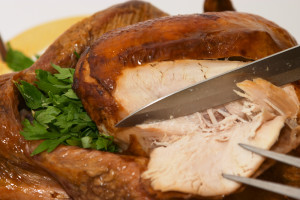
Among other benefits, turkey gives your body tryptophan, the essential amino acid that can boost bone mineral density. [Photo: © Paul Cowan | Dreamstime.com]
That’s why consuming tryptophan helps to stabilize mood for people who suffer from depression and anxiety. In fact, the most commonly prescribed drugs for depression are called SSRIs (Selective Serotonin Reuptake Inhibitors); these drugs work by changing the balance of serotonin in the brain, which alters the way the brains cells send and receive chemical messages.
Unlike tryptophan, however, SSRI medications taken for greater than six months have been shown in studies to decrease bone mineral density scores, putting people at an increased risk for fractures. Therefore, a good way to improve mood and build strong bones is to consume foods naturally high in tryptophan, including turkey.[1-3]
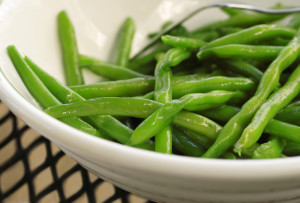
Green beans offer vitamins A, C, and K along with potassium, manganese, folate, and more. [Photo: © Suzanne Tucker | Dreamstime.com]
2. Green beans
Green beans probably rank as one of the top healthy Thanksgiving sides because they are full of vitamins and minerals—vitamin C, manganese, vitamin A, folate, and iron. In addition, green beans are loaded with the bone-building nutrients, vitamin K and potassium. Potassium helps regulate blood-acid levels. When there is too much acid in the blood, the bones begin to leak calcium.
Likewise, consuming vitamin K is great for preserving bone strength because it helps with protein absorption, blocks the formation of bone-destroying osteoclasts, and has been shown to reduce the risk of fractures in post-menopausal women. Other holiday food sources of vitamin K include green, leafy vegetables such as spinach and kale.
3. Sweet potatoes
Like green beans, sweet potatoes are another great option as healthy Thanksgiving sides because they are a good source of potassium. They are also full of the antioxidants vitamin C, vitamin B6, beta carotene, iron, magnesium and vitamin D. Both magnesium and vitamin D play a huge role in protecting the bones from breakdown. Without magnesium, the body cannot:
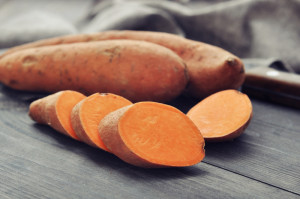
One of multiple benefits provided by sweet potatoes: magnesium, which helps us absorb calcium and activates an enzyme required for new bone to form. [Photo: © Tashka2000 | Dreamstime.com]
- Adequately absorb calcium
- Stimulate calcitonin, a hormone that draws calcium from the blood and tissues back into the bones
- Suppress parathyroid, another hormone that breaks down bone
- Convert vitamin D into its active form for calcium absorption
- Activate an enzyme required for new bone to form
- Regulate calcium transport
Aside from these marvelous bone health benefits, magnesium is one of your body’s chief requirements for insulin regulation, energy production, blood pressure control, heart health, pH balance, and cancer prevention.
Like magnesium, vitamin D is a critical bone-building nutrient. In fact, a deficiency of vitamin D has been linked with muscle weakness, increased fall risks, and bone fractures. Research presented at the 2012 Annual Meeting of the American Academy of Orthopaedic Surgeons revealed that low levels of vitamin D were found in 44 percent of postmenopausal women with wrist fracture.[4] Wrist fractures (also called distal radius fractures) are among the most common osteoporosis-related fractures occurring on average 15 years earlier than hip fractures. The bottom line… vitamin D is a significant nutrient that, while often neglected, is essential for preserving bones.
4. Cranberries
The cranberry is a relatively small berry, but when it comes to good health, it packs a powerful punch.
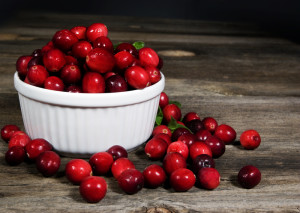
Cranberries have been shown to increase bone density and strength [Photo: © Marilyn Gould | Dreamstime.com]
In fact, a study published in the Journal of Musculoskeletal & Neuronal Interactions confirmed that proanthocyanidins substantially enhance both bone density and strength.[5]
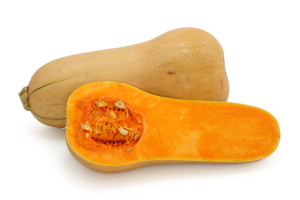
Get an extra shot of protein, calcium, iron, zinc, omega-3 fats, and other vitamins and minerals from squash (pictured) and pumpkins and their seeds. [Photo: © Elena Schweitzer | Dreamstime.com]
5. Squash and pumpkins (gourds)
Gourds and their seeds (pumpkin seeds) are full or protein and they are high in the bone-building nutrients calcium, manganese, iron, copper and zinc. They are also an excellent source of omega-3 fats. Plus, the healing properties of pumpkin seeds have been reported to improve bone conditions including osteoarthritis and osteoporosis.[6]
Foods That Cause Osteoporosis
Now that you know all about the holiday delicacies that prevent osteoporosis, it is equally important you learn the types of foods you should avoid. One place to start: our post “Junk Food Effects: Stay Away from These 6 Foods and Beverages.” Why is this so important?
Well, you can eat all of the healthy foods in the world, but if you’re eating them in combination with foods that induce bone loss, it will all be for naught. In other words, eating a serving of turkey and green beans with two extra servings of sugar-laden pie will negate the nutritional benefits.
[1] Bone. 2010 Nov;47(5):959-65.
[2] CNS Spectr. 2010;15(9):579-586.</a
[3] J Cell Biochem. 2009 Aug 1;107(5):890-8.
[4] American Academy of Orthopaedic Surgeons. “Low Levels Of Vitamin D Found In 44 Percent Of Postmenopausal Women With Wrist Fracture.” Medical News Today. MediLexicon, Intl., 10 Feb. 2012.
[5] J Musculoskelet Neuronal Interact. 2005 Jun;5(2):162-9.
[6] Am J Clin Nutr. Sept. 2004:80(3):715-721.
Originally published in 2012, this post is regularly updated.


 Ask the EN Experts March 2025
Ask the EN Experts March 2025  Vegan Diet Better Than Omnivore Diet for Cardiovascular Health
Vegan Diet Better Than Omnivore Diet for Cardiovascular Health 
Certain thanksgiving feast favorites contain a combination of significant bone-building nutrients.
© Bhofack2 | Dreamstime.com